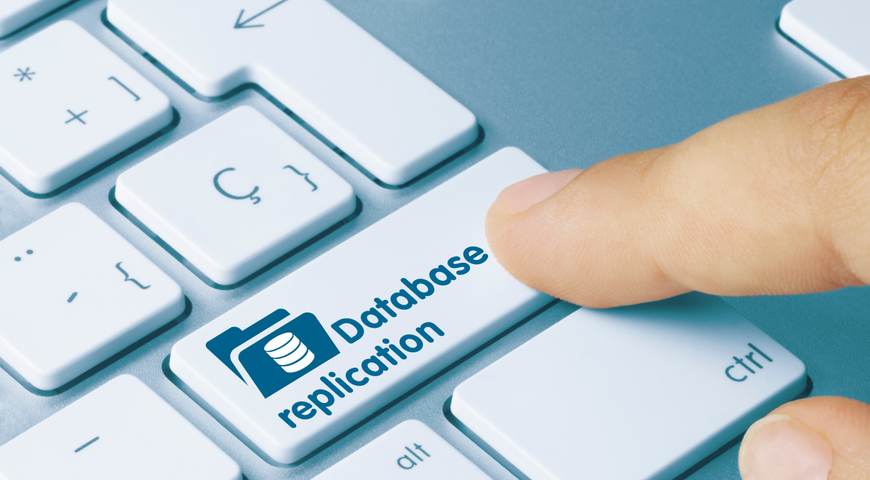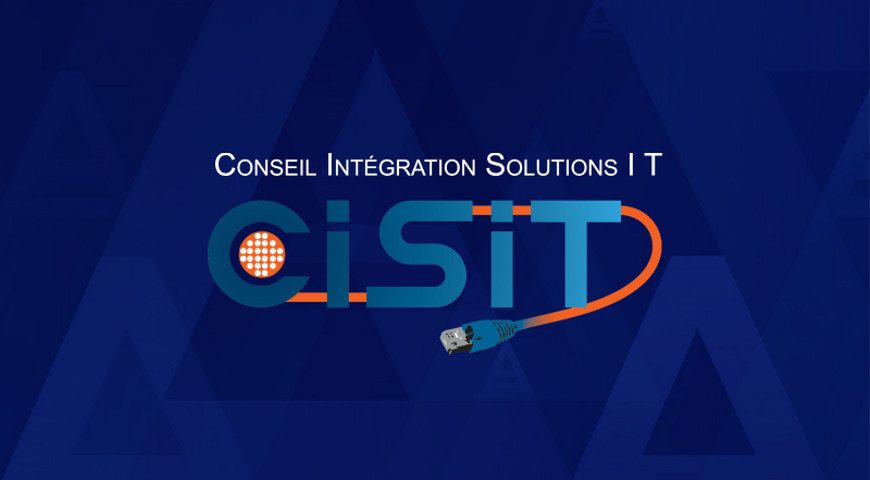
What is data replication?
Data replication plays a key role in the realm of data management and information technology. It revolves around the idea of creating and managing copies of data across storage locations, devices or systems. The primary objective, behind data replication is to ensure that data remains with boost system performance and offer redundancy to enhance resilience and reliability.
It is a fundamental aspect of data management, ensuring data availability, improving system performance, and enhancing data resilience. Selecting the right data replication tool and strategy is essential to meet specific requirements and ensure seamless data synchronization between multiple sources. By leveraging data replication effectively, organizations can safeguard their critical data, enhance disaster recovery preparedness, and maintain uninterrupted operations even in the face of unexpected challenges.
The Process of Data Replication
Data replication involves the synchronization of information, between a data source and replica nodes. Whenever changes are made at the source a replication tool promptly or periodically transfers these modifications to the replica nodes. The synchronization can occur in time or with delay depending on the chosen strategy and capabilities of the selected tool.
Choosing an Appropriate Data Replication Tool
Selecting the proper data replication tool is crucial for implementing data within an organization. Several factors need to be considered when evaluating tools so let's have a closer look at them.
Support for Various Data Sources
It is vital to look for a data replication tool that can handle types of data sources including databases (such as SQL and NoSQL) file systems, cloud storage and other applications. This versatility allows for replication, across environments.
Scalability and Performance
Consider how well the replication tool can scale to manage increasing volumes of data and a growing number of replica nodes while maintaining performance.
Data Filtering and Selection
It is important to assess whether the tool provides features, for filtering and selecting subsets of data. This allows for resource usage during replication.
There are various strategies for implementing data replication, such as full or partial replication. Full replication involves creating and maintaining copies of data at all replication nodes, which ensures that data is highly available but may require storage space. On the other hand partial replication only replicates subsets of data reducing overhead while still ensuring redundancy.
Data replication is widely used in applications, including databases, content distribution networks (CDNs) and distributed systems. The key benefit to be so widely used is because replicated databases ensure availability and fault tolerance by keeping multiple copies of the database, on multiple servers. That's sounds great, right? I believe now you understand how crucial is data replication software.
Why is database replication important?
In the fast-paced and data-driven business landscape, the ability to harness information effectively can make all the difference between success and stagnation. Organizations today handle massive volumes of data from various sources, including data warehouses and primary databases. Ensuring that this data remains consistent, accessible, and up-to-date across multiple systems is vital for making informed decisions and staying competitive. This is where data replication emerges as a critical component in modern data architecture. Let's have a deep dive in the key benefits it is providing on a daily basis, and you can be sure that they are priceless.
Strategizing for Optimal Data Replication
This process involves the creation and upkeep copies of your data, in storage locations or systems. Real time data replication allows businesses to achieve synchronization guaranteeing that any modifications made to the database are immediately reflected in replica nodes. This capability enables organizations to have an current perspective of their data regardless of the sources, or locations where it is stored.
High Availability and Disaster Recovery Preparedness
The key benefit is that it guarantees high data availability by creating redundant copies of data. If the primary database encounters hardware failure or other problems, the replica nodes can seamlessly take over, ensuring uninterrupted access to critical information. Moreover, data replication plays a vital role in disaster recovery preparedness. In the event of data loss or disasters, having replicated data ensures rapid data recovery, minimizing disruptions and downtime.
Data Warehouses and Database Replication
Data replication is particularly valuable for data warehouses, acting as repositories for historical and current data from various sources. By implementing real-time data replication, data warehouses can continuously ingest and synchronize data, ensuring that information remains updated, accurate, and consistent for analysis and reporting purposes.
Embracing the Benefits of Data Replication
In today's competitive landscape the replication process is not just an option but a necessity. Real-time data replication empowers organizations to access the most current information, facilitating agile decision-making and delivering exceptional customer experiences. By implementing a robust data replication strategy, businesses can achieve scalability, high availability, and disaster recovery preparedness, laying a strong foundation for success in a data-driven world.
Example of data replication
It is well known fact that organizations handle vast amounts of critical information that power their operations and decision-making. Data changes occur constantly, and ensuring data availability, accuracy, and protection is paramount. This is where data replication steps in as a crucial component of modern data management.
Data Protection and High Availability
Data replication plays a pivotal role in data protection and high availability. By creating redundant copies of data, organizations safeguard against data loss and system failures. In the event of hardware failures or disasters, the replicated database seamlessly takes over, ensuring uninterrupted operations and business continuity.
Empower Your Business with Data Replication
In conclusion, data replication is essential for organizations seeking to thrive in today's data-driven world. Real-time it offers instant insights, while data protection and high availability safeguard against disruptions. Embracing the process of replication with Hevo Data empowers your business with seamless data management and timely, actionable insights.
What are the three replication strategies?
Data replication strategies play a role, in guaranteeing accessible and available data across different systems. Let's explore the three replication strategies that drive data management.
1. Complete Replication
Complete replication involves creating and maintaining copies of data on all target systems. This approach enhances data availability. Allows access since each system holds a comprehensive dataset. However, it may require storage space. Might not be suitable for large scale data warehouses or data lakes.
2. Partial Replication with Change Data Capture (CDC)
This approach of replication with CDC focuses on replicating the modified data from the source to the target systems. It utilizes change data capture technology to identify and capture real time changes minimizing overhead in replicating every piece of data. This strategy is particularly useful in scenarios where frequent changes occur optimizing data pipelines while ensuring updates.
3. Dynamic Replication with No Code Data Pipeline
A no code data pipeline presents an efficient approach to replication. It enables movement of data between databases, like warehouses and lakes without requiring intricate coding knowledge. This approach empowers organizations to build pipelines that can adapt to evolving business requirements.
What is data replication software used for?
Having the appropriate tools to effectively synchronize data, across systems is crucial for achieving success in business. This is where the significance of data replication software comes into play as it empowers organizations to maintain up-to-date data streamline, operations and enhance the capabilities of their data warehouse.
Real Time Data Synchronization
One of the roles played by data replication software is facilitating data synchronization, which allows businesses to access updated information instantly. Given that organizations deal with sources of data and diverse database objects having reliable data replication software becomes imperative for streamlining their data pipelines and ensuring timely updates across their systems.
Seamless Database Operations and Migrations
Data replication software also plays a role in making database operations seamless. It enables organizations to perform data replication across relational databases without requiring manual intervention. This greatly simplifies tasks such, as data migration, upgrades and integration of datasets while minimizing downtime and ensuring availability of accurate information.
Unlocking the Power of Data Warehouses
Top notch software, for data replication empowers data warehouses by ensuring a flow of up to date information from sources. This not enhances the availability and accuracy of data. Also empowers businesses to confidently make decisions based on solid data.
Simplify Data Migration Effortlessly
Moving data from one database to another can be an time consuming process. However, with the assistance of data replication software this task becomes much simpler as it automates the migration process. It guarantees efficient migration minimizing the chances of any data loss or discrepancies.
Embrace Cutting edge Data Replication Software
Selecting the data replication software is crucial when it comes to harnessing synchronization capabilities. Acronis True Image, a leading software in this field offers a solution that effortlessly handles data sources and dynamic replication needs without requiring any coding expertise.
Data replication software has become a tool, for businesses aiming to streamline synchronization efforts and enhance database operations. By leveraging real time updates and smooth migration processes organizations can make informed decisions while staying ahead in todays landscape.
How does data replication work?
The replication software is the backbone of modern data integration, powering efficient data movement and improving data availability. This process involves copying data from a source to one or multiple target systems, ensuring that all systems have the same data at any given time.
As we said above data replication enables timely updates, empowering localized data access, and ensuring data consistency across multiple data sources. With the replication process, organizations can streamline data integration and harness the full potential of their data-driven initiatives, making informed decisions with confidence and acknowledge. Embrace data replication as the engine of seamless data movement, and unlock the true value of your information.
Key features to look for in data replication tools
Selecting the best software is crucial for organizations seeking to improve data availability and harness the full potential of their data-driven operations. When evaluating data replication tools, consider key features such as data integrity to ensure accuracy during replication processes. Look for seamless data migration capabilities and support for various replication methods, including synchronous and asynchronous replication.
You must ensure the software can handle file replication, log-based replication, and key-based replication, empowering flexible data movement. With the right data tool, organizations can unlock the true value of their data, and make data-driven decisions with confidence. Understanding the power of this kind of software can elevate your business to new heights.
When choosing a data replication tool it's important to find one that provides options, for both synchronous replication and asynchronous replication methods. This will give you the flexibility to choose the method that best suits your data synchronization requirements. Additionally, look for a data replication solution that can handle techniques such as file replication, log based replication and key based replication. Having a proper support, for these methods ensures that your data can be effectively replicated.
Another crucial aspect is ensuring that the chosen tool can deal with keys and maintain their integrity throughout the replication process. This will provide consistency and accuracy when replicating data. Remember to consider these factors when selecting a data replication tool to meet your needs, so you will be sure that you have what you need.
Real-time replication capabilities
Real-time data replication allows organizations to instantly synchronize data changes from a source database to a replicated database. This means that any modifications made to the production database are immediately propagated to the replicated database.
With real-time data replication, businesses can access up-to-the-minute insights, enabling agile decision-making and quick responses to market dynamics.
Support for various data types and formats
A robust data replication solution provides support for various data types and formats, facilitating efficient data movement.
Replicate Data Across Diverse Sources: Data replication tools offer the ability to replicate information from diverse sources, including databases, data lakes, and cloud platforms. This provides a unified view of updated data from multiple locations.
Seamless Data Migration: With the replication software, seamless data migration becomes a reality. Organizations can effortlessly migrate data from one data center to another, without disrupting ongoing operations. Because we all know how important is that for every business.
Support for Structured and Unstructured Data: Whether dealing with structured data from databases or unstructured data from documents and media files, data replication solutions can handle various data types and formats.
Data Lakes and Data Integration: It is instrumental in integrating information from data lakes, enabling businesses to leverage comprehensive data sets for informed decision-making.
Timely Updates and Real-Time Data: Thanks to that process it provides real-time data updates, empowering organizations with the most current information for timely actions.
Data consistency and integrity checks
Data Integrity Checks: Qlik Replicate performs data integrity checks during the ongoing data replication process. This ensures that data is accurately replicated from source to target systems, safeguarding against any data inconsistencies or discrepancies.
Log-Based CDC for Real-Time Updates: With log-based Change Data Capture (CDC), Qlik Replicate captures and replicates data changes constantly, empowering businesses with up-to-the-minute insights for timely actions and analytics purposes.
Primary Key Maintenance: Efficiently manages primary keys during replication process, ensuring the integrity of unique identifiers and maintaining data consistency across systems.
Network Load Balancing: It is optimizing network bandwidth by efficiently balancing the network load during all the processes. This enhances overall system performance and minimizes the impact on network resources.
Enterprise-Grade Security: Data security is a top priority for the solutions that offers robust encryption and data protection measures, ensuring that sensitive information remains secure during the replication process.
Avoiding Data Errors: Detects and rectifies data errors resulting from incorrectly configured systems or human mistakes, preventing data discrepancies and data lake contamination.
Scalability and performance metrics
This kind of replication software is equipped with comprehensive scalability and performance metrics providing businesses to harness the their full potential.
Seamless Scalability: With data volumes growing exponentially, a scalable data replication solution is essential. Scale seamlessly as your data requirements expand, securing uninterrupted data synchronization across systems.
Optimized Bandwidth Usage: Efficient replication solutions optimize network bandwidth usage, minimizing network load and ensuring smooth data synchronization without disruptions.
Latency Reduction: Achieve low-latency replication process for real-time data updates. Minimize the time between data changes at the source and their replication to target systems.
Performance Dashboards: Interactive performance dashboards offer a holistic view of these processes. Track and analyze replication trends, allowing for proactive decision-making and improved system performance.
Load Balancing: Load balancing ensures even distribution of data replication tasks across available resources, preventing bottlenecks and optimizing overall performance.
Capacity Planning: Proper solutions with performance metrics enable capacity planning. Anticipate future data requirements and allocate resources accordingly for efficient data movement.
Compatibility with existing infrastructure
A replication approach that seamlessly integrates with your existing infrastructure is a game-changer in today's data-centric landscape. By providing seamless integration, support for diverse data sources, and flexible data mapping, your organization can optimize data movement and synchronization.
A scalable and cost-effective solution ensures compatibility with growth and helps you maximize your capabilities. Unleash the true potential of your data-driven initiatives with a compatible replication solution that empowers your organization to thrive in the competitive digital world.
Technical support and documentation
Technical support and documentation are indispensable pillars of effective data management. Access to reliable technical assistance ensures swift issue resolution and empowers organizations to make the most of their data processing power. Comprehensive documentation guides users through implementation, customization, and troubleshooting, fostering a smooth and efficient data management experience.
Focus on finding the best data management solution that prioritizes technical support and comprehensive documentation, and elevate your data processing capabilities to new heights.
How do you replicate a database?
Data replication in databases is a fundamental process that ensures data consistency and availability across multiple systems. By replicating data, businesses can harness real-time insights and streamline data management. Here's a step-by-step guide on how data replication works in a database:
- Selecting the Data Replication Method: Choose the appropriate data replication method based on your requirements. Common methods include log-based CDC (Change Data Capture), trigger-based replication, and snapshot replication.
- Setting up Source and Target Databases: Establish a connection between the source database (where the original data resides) and the target database (where replicated data will be stored).
- Identifying Replication Scope: Define the scope of data replication. Determine which tables or data elements need replication and set up the necessary rules.
- Initiating the Replication Process: Begin the replication process by initiating the data movement from the source to the target database. This can be done through an automated replication tool or using native database features.
- Capturing Data Changes: Depending on the chosen replication approach, the system captures data changes from the source database. It tracks inserts, updates, and deletes, ensuring real-time data synchronization.
- Applying Data Transformation (If Needed): If data transformation is required, apply the necessary rules to provide data compatibility between the source and target databases.
- Monitoring and Error Handling: Monitor the data replication process regularly and handle any errors that may arise. Data integrity checks and error logging ensure data accuracy and reliability.
- Ensuring Data Consistency: Verify that replicated data in the target database matches the original data in the source database. Data consistency is critical to ensure accurate decision-making.
- Optimizing Performance: Fine-tune process for optimal performance. This may involve load balancing, network optimization, and other performance enhancements.
- Scaling and Growth: As data volumes grow or business requirements change, ensure that your data replication process can scale effortlessly to accommodate future needs.
What is backup vs snapshot vs replication?
Nowadays, protecting your information is of utmost importance. There are three methods to ensure data protection and they are: backup, snapshot and replication.
Backup: a backup software helps you by creating copies of your data. These copies are stored separately from the data. Serve as a safety net in case of any data loss or system failures.
Snapshot: Snapshots capture the state of your data at a current moment allowing you to revert back to that particular state if necessary. However, it's important to note that snapshots are usually stored on the system as the data, which means they may be vulnerable to hardware failures.
Replication: Replication involves maintaining time or near real time copies of your data. This ensures available access to your information across locations or systems ensuring seamless synchronization.
Each method has its advantages and an effective strategy, for protecting your data may involve using a combination of these approaches. This will help guarantee both the security and availability of your information. It is up to you to choose the proper one, for your individual needs.
Why replicate backups and is it for a better data availability?
Replicate backups represent a strategic approach to data protection, combining data replication's real-time synchronization and the safety net of traditional backups. This powerful synergy empowers organizations to confidently safeguard their data, strengthen disaster recovery capabilities, and ensure seamless business continuity in an increasingly dynamic and data-driven world. Embrace replicate backups to elevate your data protection strategy and safeguard your business from potential disruptions. Thus, you will have constant data availability, without a concern that any disruptive event may cause damage or data loss of your precious information.
The future of data replication solutions
The constant development of data replication solutions promises an exciting journey in the world of data management. As technology advances and data volumes explode, data replication solutions are poised to redefine the way organizations handle their valuable information.
The future of data replication solutions is filled with innovation and transformative possibilities. Businesses can look forward to real-time insights, AI-driven automation, enhanced security, and seamless cloud integration. As data replication technology evolves, organizations can embrace scalable, flexible, and advanced solutions to unlock the true potential of their data-driven initiatives. Understanding, accepting, and implementing these approaches of data replication solutions that we talked about to your business will elevate your data management to new heights of success.
About Acronis
A Swiss company founded in Singapore in 2003, Acronis has 15 offices worldwide and employees in 50+ countries. Acronis Cyber Protect Cloud is available in 26 languages in 150 countries and is used by over 21,000 service providers to protect over 750,000 businesses.



